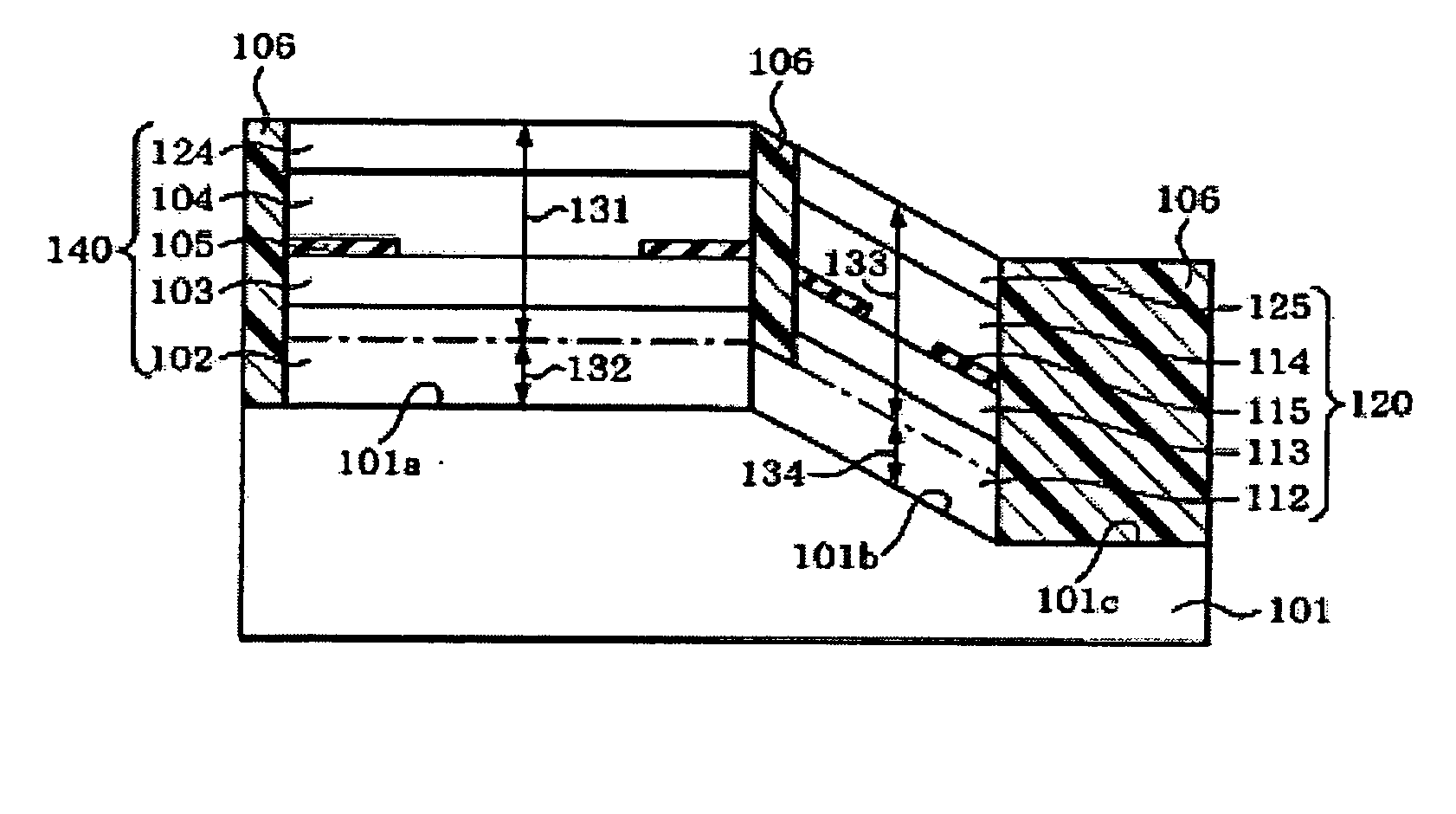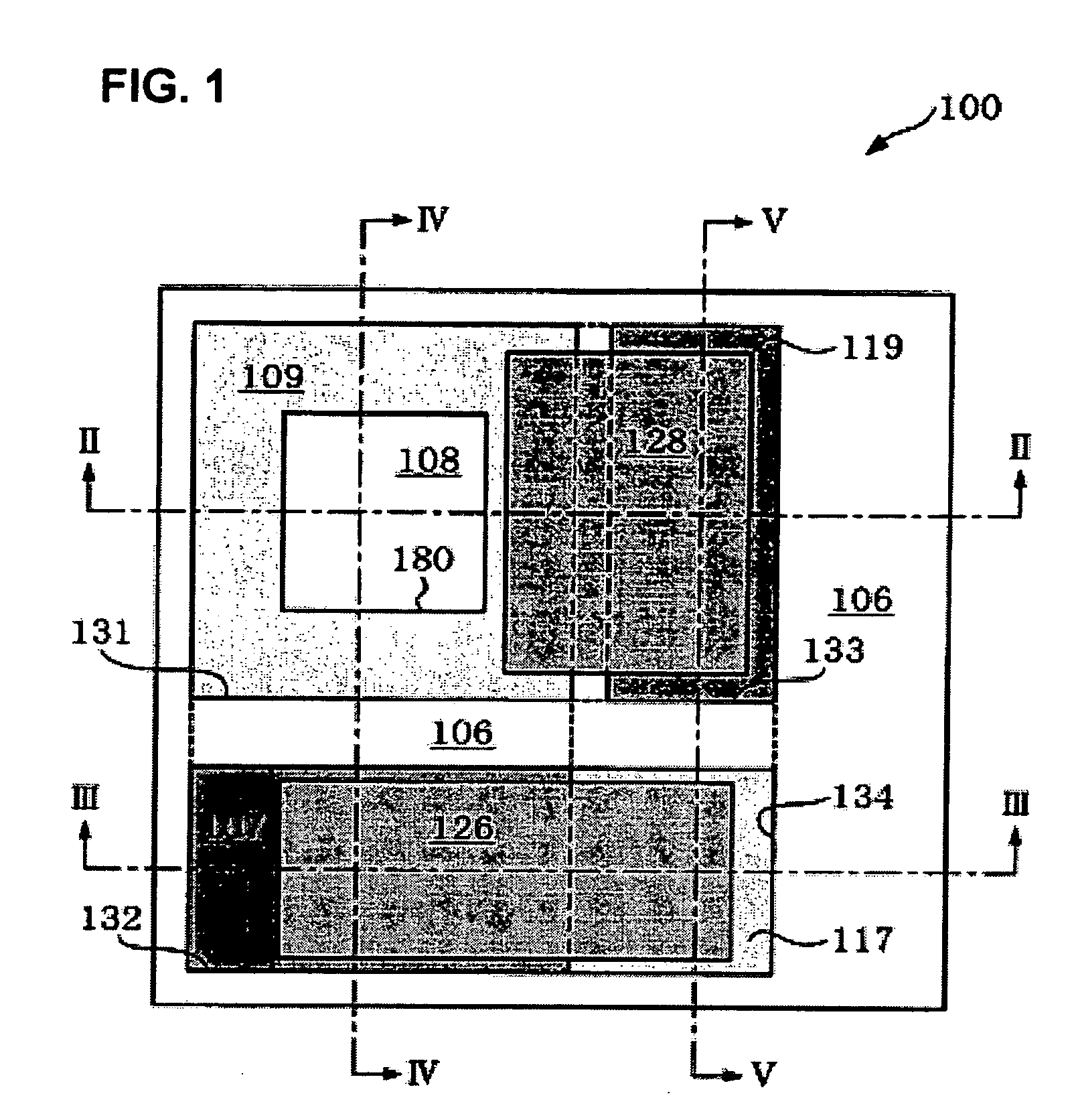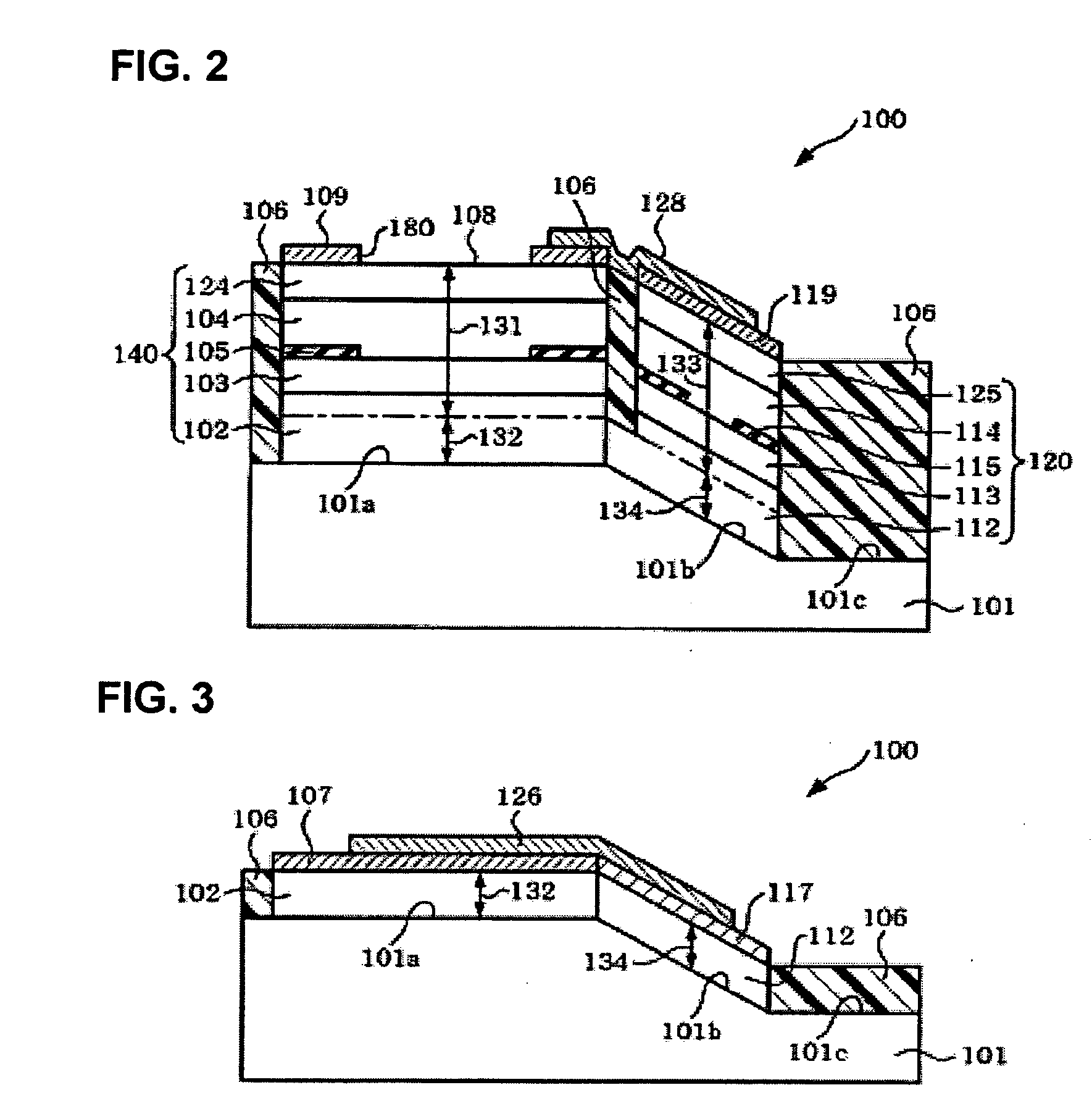Surface-emitting type device and its manufacturing method
a technology of surface-emitting devices and manufacturing methods, which is applied in the direction of semiconductor lasers, lasers, transistors, etc., can solve the problems of low tolerance to voltage in the reverse direction, device damage, and device destruction, so as to prevent electrostatic damage and improve reliability.
- Summary
- Abstract
- Description
- Claims
- Application Information
AI Technical Summary
Benefits of technology
Problems solved by technology
Method used
Image
Examples
Embodiment Construction
[0050] Preferred embodiments of the invention are described below with reference to the accompanying drawings.
[0051] 1. First, a surface-emitting type device 100 in accordance with an embodiment is described.
[0052]FIG. 1 is a plan view schematically showing the surface-emitting type device 100, FIG. 2 is a cross-sectional view taken along a line II-II of FIG. 1, FIG. 3 is a cross-sectional view taken along a line III-III of FIG. 1, FIG. 4 is a cross-sectional view taken along a line IV-IV of FIG. 1, FIG. 5 is a cross-sectional view taken along a line V-V of FIG. 1, and FIG. 6 is a circuit diagram of the surface-emitting type device 100.
[0053] The surface-emitting type device 100 includes, as shown in FIG. 2, FIG. 4 and FIG. 5, a substrate 101, an emission section 140 and a rectification section 120. The present embodiment is described as to a case where the emission section 140 functions as a surface-emitting type semiconductor laser, and the rectification section 120 functions a...
PUM
 Login to View More
Login to View More Abstract
Description
Claims
Application Information
 Login to View More
Login to View More - R&D
- Intellectual Property
- Life Sciences
- Materials
- Tech Scout
- Unparalleled Data Quality
- Higher Quality Content
- 60% Fewer Hallucinations
Browse by: Latest US Patents, China's latest patents, Technical Efficacy Thesaurus, Application Domain, Technology Topic, Popular Technical Reports.
© 2025 PatSnap. All rights reserved.Legal|Privacy policy|Modern Slavery Act Transparency Statement|Sitemap|About US| Contact US: help@patsnap.com



